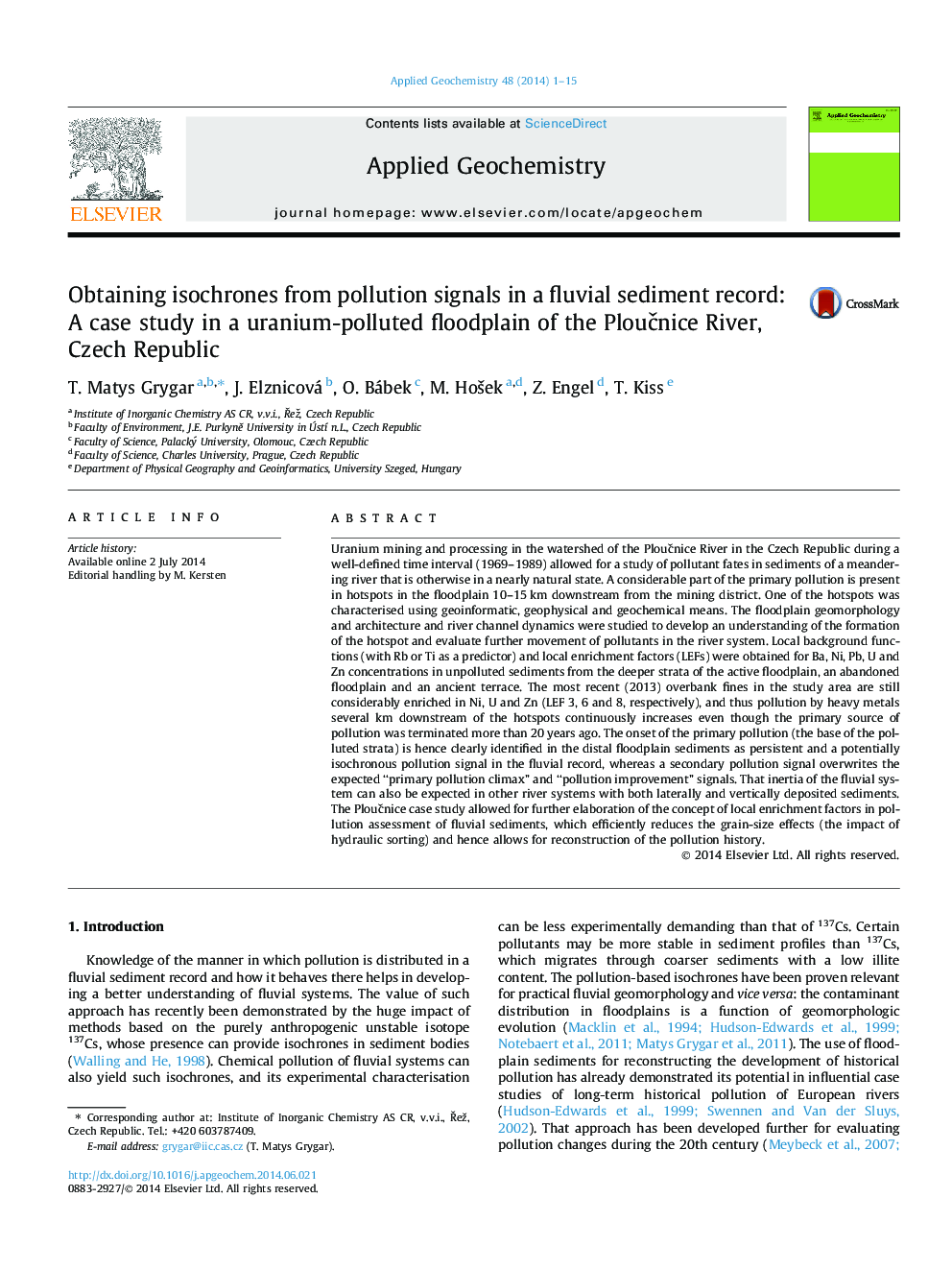| کد مقاله | کد نشریه | سال انتشار | مقاله انگلیسی | نسخه تمام متن |
|---|---|---|---|---|
| 4435781 | 1620243 | 2014 | 15 صفحه PDF | دانلود رایگان |
• Integrated approach to assess pollutant distribution in floodplain.
• Natural background concentration is a function and not a value.
• Concept of local enrichment factors based on local background functions.
• Secondary pollution from transient fluvial deposits.
Uranium mining and processing in the watershed of the Ploučnice River in the Czech Republic during a well-defined time interval (1969–1989) allowed for a study of pollutant fates in sediments of a meandering river that is otherwise in a nearly natural state. A considerable part of the primary pollution is present in hotspots in the floodplain 10–15 km downstream from the mining district. One of the hotspots was characterised using geoinformatic, geophysical and geochemical means. The floodplain geomorphology and architecture and river channel dynamics were studied to develop an understanding of the formation of the hotspot and evaluate further movement of pollutants in the river system. Local background functions (with Rb or Ti as a predictor) and local enrichment factors (LEFs) were obtained for Ba, Ni, Pb, U and Zn concentrations in unpolluted sediments from the deeper strata of the active floodplain, an abandoned floodplain and an ancient terrace. The most recent (2013) overbank fines in the study area are still considerably enriched in Ni, U and Zn (LEF 3, 6 and 8, respectively), and thus pollution by heavy metals several km downstream of the hotspots continuously increases even though the primary source of pollution was terminated more than 20 years ago. The onset of the primary pollution (the base of the polluted strata) is hence clearly identified in the distal floodplain sediments as persistent and a potentially isochronous pollution signal in the fluvial record, whereas a secondary pollution signal overwrites the expected “primary pollution climax” and “pollution improvement” signals. That inertia of the fluvial system can also be expected in other river systems with both laterally and vertically deposited sediments. The Ploučnice case study allowed for further elaboration of the concept of local enrichment factors in pollution assessment of fluvial sediments, which efficiently reduces the grain-size effects (the impact of hydraulic sorting) and hence allows for reconstruction of the pollution history.
Journal: Applied Geochemistry - Volume 48, September 2014, Pages 1–15
